By Joseph Connaughton
The first good news in the war for the United States had been the Doolittle Raid on April 18. Sixteen North American B-25 Mitchell medium bombers led by Lt. Col. Jimmy Doolittle took off from the aircraft carrier USS Hornet and attacked industrial targets in the Tokyo area. None of the planes returned, but most of the aircrews survived by parachuting or crash-landing in China. The Chinese assisted them in escaping the Japanese.
The Doolittle Raid did little damage to the Japanese targets, but it proved to be a major morale booster for the home front as well as for the U.S. troops. Its most important effect, though, was on the decision of Admiral Isoroku Yamamoto, commander in chief of the Japanese Combined Fleet, to plan an operation that resulted in the Battle of Midway. Yamamoto conceived a three-pronged offensive—the invasion of the Aleutian Islands, capture of Midway Island, and then onward to the Hawaiian Islands. What he did not count on was a small U.S. Naval Intelligence group in Hawaii who just a few weeks earlier had broken the Japanese naval code, JN-25. History has chronicled the great U.S. victory, a turning point in the war in the Pacific.
The 319th Bomb Group
The 319th Bomb Group, activated at Barksdale Field, Shreveport, Louisiana, June 26, 1942, quickly assembled a with a cadre from the 17th Bomb Group and recent graduates of flight training and maintenance schools. The 17th Bomb Group was the oldest medium bomb group in the Army Air Corps, tracing its roots back to squadrons that had seen action in World War I. It had also provided the volunteer crews for the April Doolittle raid on Japan. Air Force Chief General Henry “Hap” Arnold urgently wanted to get the new Martin B-26 Marauder medium bomber into combat to support Operation Torch, the invasion of North Africa planned for November 8,1942.
Five of the Doolittle Raiders became members of the 319th Bomb Group. They were: Major David M. Jones (pilot), 1st Lt. Donald G. Smith (pilot), 1st Lt. Griffith P. Williams (pilot), 2nd Lt. Richard E. Miller (bombardier), and 2nd Lt. Thomas C. Griffin (navigator).
Their 319th comrades were in awe of the experiences and hardships the Raiders related to them on a few occasions when asked. All the others were proud to have them in the group but felt they had already fulfilled their obligation to their country. They looked upon the Doolittle Raiders as heroes and experienced B-25 airmen who had seen the fire of combat. Most of the other 319th pilots had only single-engine training, while a few had less than 10 hours in the AT-9 twin-engine trainer. The rest of the 319th aircrews had received only machine-gun target practice and bombing practice with sand-filled bombs.
This understrength group quickly moved to Harding Field, Baton Rouge, Louisiana, on August 8, 1942, to operate under field conditions. Here the enlisted men would live in tents and the officers in temporary barracks. They immediately embarked on an intensive 24-hour training effort. The emphasis was on bombing and gunnery using low-level tactics, since the Army planned to use the Marauder in an on-the-deck attack role. The Doolittle Raiders were particularly adept in this role from their training at Eglin Field near Pensacola, Florida, and subsequent Tokyo Raid experience.
Initial Troubles with the ‘Widow Maker’
Major Jones flew the initial evaluation flights on the B-25 aircraft which were specially equipped for the Tokyo mission. He also participated as a flight commander in the planning, training, and completion of the mission. He became commander of the 438th Squadron, one of four squadrons of the 319th Bomb Group, whic also included the 437th, 439th, and 440th. The 438th Squadron later turned out to be the premier squadron of the group with six of the original members eventually moving up to operations officer and three of those to serving later as group commanders.
Jones believed strongly in low-level bombing. Because of his Doolittle Raid experience, Group Commander Major Alvord G. Rutherford gave him the assignment to develop low-level bombing tactics and techniques for the group. Three of his fellow raiders, Griffith Williams, Thomas Griffin, and Richard Miller, were also assigned to the 438th Squadron. Williams served as squadron deputy commander, Griffin as squadron navigator, and Miller as squadron bombardier. The remaining raider, Donald Smith, was assigned to the 439th Squadron.
Training proceeded at a feverish pace. There was little time for pilots and aircrews to do more than learn to fly the B-26 Marauder. A shortage of instructor pilots delayed transition, and the new aircraft also experienced several bugs. The most critical problems were runaway propellers and collapsing nose wheels. The B-26 was soon dubbed the Widow Maker, the Flying Prostitute (because the short, stubby wings provided no visible means of support), and other disparaging names, but the crews loved their Marauders.
Under these adverse conditions, a number of accidents occurred, some ending in fatal crashes. The problems were troublesome, but through the ingenuity of the ground crew personnel and the Martin Company’s support, they were able to solve them.
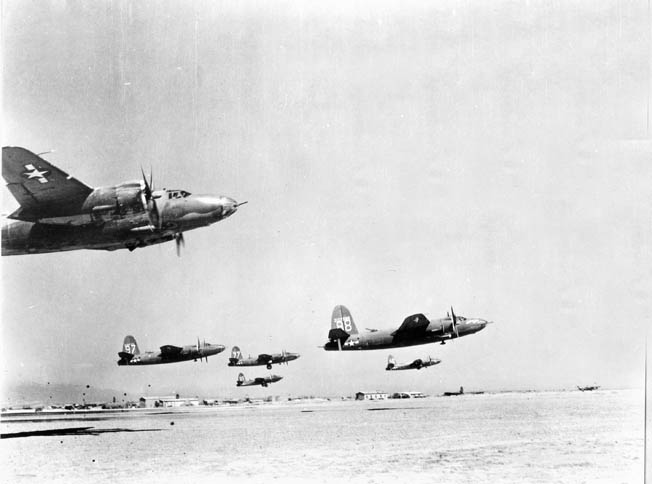
Because of these problems and the lack of airplanes, OTU (Operation Training Unit) training was shortened or not given. Nonpilot aircrew members—navigators, bombardiers, gunners, flight engineers, and radio operators— received some important ground school training but little flight training. The bombardiers and gunners had hardly dropped a bomb or fired a shot before the group was ordered overseas for Operation Torch. The Doolittle Raiders had a leg up from their raid experience and had little difficulty getting used to the B-26 aircraft and the schedule. The other aircrews adapted the best they could.
Journeying to England
Before the month of August was out, the group was up to strength and ordered overseas. Its initial destination would be Attlebridge, England. The group would move in three echelons: air support, flight, and ground. The air support and ground echelons would go by sea while the flight echelon would fly its new B-26s the northern route to England from the Baer Field, Indiana, to Presque Isle, Maine, to Goose Bay, Labrador to Bluie West 1, Greenland, to Rykjavik, Iceland, to Preswick, Scotland, and on to Attlebridge.
Commander Rutherford sent the squadrons in sequence (437th to 440th) to Baer Field, where they were given a list of equipment to load and take into combat. The list included all of the plane’s equipment and more. Spare parts and tools were included along with other items to make them a self-sufficient group. It was a heavy load that required the aircrew to be reduced to four: pilot, co-pilot, navigator, and radioman. The remaining aircrew would be flown over by transport.
The 319th’s B-26s were the first aircraft of their type to be maintained and outfitted by the Concentration Command at Baer Field. That command had no experience in the maintenance and rigging of the B-26s for combat. Jones pushed to get his 438th Squadron out on schedule by using his own flight engineers and one or two line chiefs who were smuggled aboard as passengers. By working around the clock one squadron at a time, they were able to get 14 planes ready for each of the 437th, 438th, and 439th Squadrons and off on time at three-day intervals. The 440th had to sit and wait for planes.
On September 20, Jones led his 438th Squadron on the first leg of their overseas trip. The weather would be frightful, and the northern route had already been closed to commercial traffic. When they arrived at Presque Isle they would be under the control of the North Atlantic Ferry Command. The trip to Attlebridge would be fraught with weather delays and some accidents. Weather held them up for three days before they could get off to Goose Bay and another three days before leaving for Greenland. On all of these flights they flew in formations of from three to seven planes, following a lead plane with a lead navigator on board.
Only seven got off from Goose Bay for Greenland on September 27, while the remaining B-26s had engine trouble. Jones led one flight of four ships followed by a second flight of three. They soon ran into some rough weather, which forced the three-plane formation to turn back. Jones’s flight faced a terrible challenge when landing at the Bluie West 1 airfield as noted from the diary of 2nd Lt. Robert Paulsen flying on Jones’s wing:
“The fjord was too narrow to turn a B-26 around in. The soup was so low we couldn’t see the tops of the mountains and the water below was full of icebergs. It was like flying into a cave! We flew up the fjord in single file and landed at the field which was surrounded by mountains and had one end of the runway at sea level and the other 85 feet higher with a mountain at the end so that you couldn’t pull up and go around again.”
All four planes landed safely with only one mishap. The landing gear of 2nd Lt. Victor Daniel’s B-26 folded up on landing. No one was hurt, but the plane was completely washed out.
The heavier jackets and boots issued to the airmen on Greenland made life a lot easier. Their stay in Greenland lasted two weeks; in fact, Greenland and Iceland would be the major delay stations en route. During their stay on Greenland, the airmen endured two snowstorms with winds up to 150 miles per hour, requiring them to tie down the planes in the middle of the night.
Although the weather was bitter cold on Greenland, all was not bad. Hiking, hunting, and fishing in the snow-covered mountains gave them exercise during the day, while card games at night tested their mental acuity. They ate well, too. Miller and Lieutenant Holly Grimm commented on the welcomng meal of thick steaks and strawberry ice cream upon their arrival.
By the time the weather had cleared for Iceland, 12 planes had already arrived in Greenland. The pilots were anxious to leave, but all would remember the fiery northern lights dancing across the sky with the huge Greenland glacier in the background, and the cracking sounds when icebergs broke away from it and floated into the sea. The airmen left for Reykjavik October 14, and all 12 planes arrived without incident. The next day they received a briefing on the trip to Scotland, but bad weather ahead would force them to stay another week.
They finally got the word to take off the next day. Before they could take off, the wings and engines of the B-26s had to be warmed up with ground-based heaters. They got up early because the weather report looked good, and after a last-minute briefing they were on their way to Prestwick. After about an hour, they ran into some rough weather: an unexpected front that ran from 50 feet above the water to high altitude.
The formation attempted to fly over it. At 16,000 feet, they still had not topped it, and the steering became mushy due to the heavy load they were carrying. Ice began to form on the wings, so they next attempted to fly under the front at 100 to 200 feet in an attempt to break the ice.
The ice thawed, but the visibility was poor. Fear of flying straight into the water drove them again to high altitude. The front was too broad to fly around, so they ended up flying through it. They ran into one thunderstorm after another. The trailing pilots felt terrific tension as they caught only brief glimpses of their lead ship. After seven hours and 45 minutes, they broke into clear sky and could see the coast of Scotland. When they arrived at the terminal they learned the other formation led by Colonel Rutherford had turned back because of the weather.
By the middle of October most of the aircrews of the 437th, 438th, and 439th had made it to Attlebridge. The 440th did not clear Baer Field until October 19, thus bearing the brunt of the severe weather on the northern route. The weather between Greenland and Iceland was so dreadful that three planes were lost without a trace. A number of the B-26s were forced back and later had to cross by the southern route to join the group in North Africa. Lieutenant Griffith Williams, who earlier had transferred to the 440th, was in that group.
Losing Donald Smith
While quartered at Attlebridge, the group spent time gathering the remaining crews while more planes arrived over the next week. Numerous local flights were made to establish fuel consumption and for maintenance at Honington. The emphasis would be to hastily get as many planes operational as possible before the long flight to North Africa.
They had no time to fly a few missions with the Eighth Air Force over Germany to gain combat experience as originally planned. The air support echelon and ground echelon had already boarded ships and were in convoy in the Firth of Clyde, leaving for North Africa. Colonel Rutherford, eager to get into action, made a hasty but questionable decision in leading the first wave to North Africa after he learned the air support echelon had already gone ashore onto the beaches of Arzew east of Oran on November 8.
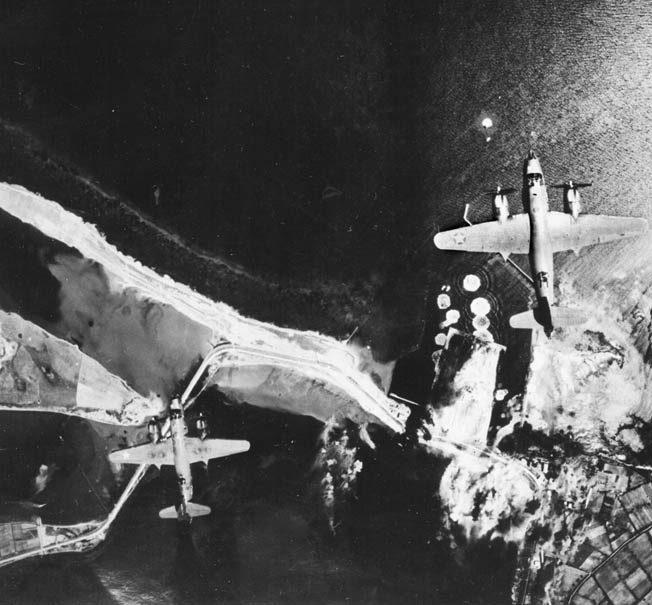
Ten B-26s took off through fog heading for Lands End on November 12. Five were lost, but the remaining five returned safely to their base. Killed were the 319th commander, Colonel Rutherford, 439th squadron commander, Captain Tuttle, and their entire crews when planes got lost in bad weather and were shot down over the Cherbourg peninsula in German-occupied France. Captain Smith, one of the Tokyo raiders, crashed in England and his entire crew was killed. The other three planes that crashed on landing were seriously damaged, but their crews recovered. These incidents also took away five of the 35 planes that had now arrived in England, making only half of their original complement of 57 available for the initial Torch operation.
Major Jones Captured
Major Jones, now the acting group commander, ordered the next nine planes to leave for North Africa in better weather on November 14. He had no plane of his own because his B-26 had been damaged. But he did have the authority to commandeer any plane he wanted. He chose Holly Grimm’s plane, named Melba. Of course, Grimm could not complain. On these first flights to North Africa much rank was pulled. Higher ranking officers also took other planes. Some got additional planes later and others had to join the next convoy to North Africa.
The Twelfth Air Force ordered the 319th into action, although only 16 of the 25 planes that had arrived from England were serviceable. They were flown to Maison Blanche airfield on November 24 to be in range of Axis targets. There was quite a scramble to get in on the first mission, set for November 28, but only nine planes could be readied for the low-level mission against the harbor facilities at Sfax, Tunisia. They included four from the 438th Squadron, three from the 437th, and two from the 439th. Jones led the mission and added the others on the basis of the availability of their planes and crews. The mission was a resounding success. The tank farms at the docks, warehouses, and railroad marshalling yards were severely damaged. The entire area was left in flames. Although intense flak was encountered, there were no losses, but planes were damaged and one gunner was wounded.
Jones led the first few missions because he felt a responsibility as group commander to launch his airmen into combat. On the next two missions, two B-26s crashed as a result of enemy fire, but with only one fatality, a tail gunner. Jones took newly assigned Group Commander Lt. Col. Sam W. Agee along as co-pilot when he led a flight of eight B-26s to bomb Bizerte, Tunisia, on his fourth mission. Tom Griffin also served as a navigator/bombardier on that mission. Eight Lockheed P-38 Lightning fighters accompanied as flight escort. The B-26s bombed Ferryville Harbor and the Bizerte Harbor area, hitting ships at anchor, a railway station, and oil storage tanks.
The flight encountered extremely accurate flak, which disabled Jones’s aircraft. It was seen crash-landing on a beach northeast of the city.
Griffin navigated the return flight to their base, but they were attacked by four German Focke Wulf Fw-190 fighters as they left the target area. Two P-38s drove the Germans off and claimed one probable kill. Following that attack, the B-26s were threatened by two Messerschmitt Me-109 fighters, which were driven off by the P-38s, which claimed another kill. One of the P-38s was damaged and had to make an emergency landing in Algeria at the coastal town of Bone. After returning to base, they found out that Agee, Jones and their crew were taken prisoner. Two of the 319th’s five Doolittle Raiders had now been lost.
The Death of Richard Miller
By Christmas, the 319th Bomb Group’s losses from low-level bombing had mounted to the extent that on December 26, General Doolittle ordered all B-26s to bomb all land targets at medium altitude from 10,000 to 12,000 feet using the Norden bombsight. The low-level bombing could continue only as sea sweeps to attack German General Erwin Rommel’s supply lines to his forces in North Africa. The operations officer, Captain Randy Holzapple, responded to this order on January 6 by moving seven B-26s east from Telergma to Biskra airdrome at the edge of the Sahara Desert. Lieutenants Miller and Griffin and their crews were in that group. They would conduct skip-bombing tests to develop the required bombing parameters and accuracy.
Holzapple modified the upper turret gun sight of the B-26 Marauder and mounted it on the co-pilot’s dash to sight the bomb angle. For practice, he used defused 100-pound and 300-pound bombs against land targets nine feet tall by 25 feet wide. The pilot held the plane’s air speed and altitude constant while the co-pilot operated the rudder pedals as he used his modified gun sight to zero in on the middle of the target. When the plane reached the drop angle sighted in his gun sight, he released the bomb. Passes were made at minimum altitude, 50 to 300 feet, in formations of two or three planes.
Captain Holzapple led a five-plane skipbombing sea sweep in the early morning hours of January 22. The plan was for each pilot to select a separate target and drop the three 500-pound bombs. Captain Miller gave Holzapple a bearing toward the suspected location of the convoy and then entered the nose of the plane. After about an hour, Miller spotted a convoy roughly 50 miles northeast of Tunis. Holzapple waggled his plane’s wings to signal the others. Then he descended to 50 feet above the water and held the nose on the cluster of ships until he could single out a target.
Miller could see the fireworks display of tracers arcing toward them as they closed within one mile of the ships. Holzapple lined up on a large freighter and held the plane’s airspeed and altitude constant while his co-pilot, Lieutenant John Lichty, guided with the rudder pedals and aimed through the modified gun sight. The plane shuddered and lurched upward as it released its bombs. Just as they passed over the ship, the concussion from a tremendous explosion rocked the plane. They had hit the freighter!
Miller screamed in pain over the intercom. Holzapple immediately ordered Lichty to crawl into the nose and check on Miller. Before Lichty could slide his seat back to enter the nose, the dreaded words “Fighters at 6 o’clock high” came over the intercom from the tail gunner, Sergeant D.D. Barnes. “There’s a bunch of Me-109s after us and our trailing B-26s.”
The Me-109s gave the group a running battle for the next 10 minutes before finally breaking off the encounter. The two trailing bombers were so crippled by enemy fire that both crash landed in Algeria near Bone. Holzapple’s plane was heavily damaged as well, but was able to limp back to base.
Several of the crew members were wounded and later recovered, but Miller died of shrapnel wounds from the convoy’s guns. A large freighter and cargo liner were confirmed sunk. Two Me-109s and two twin-engine Me-110 fighters were also confirmed destroyed by the B-26 gunners.
A Hard Landing in the Mediterranean
The very next day, a sea sweep by four B-26s was led by Captain Gilbert. Lieutenant Charles “Chuck” Meyers needed a navigator for his plane, and Lieutenant Holly Grimm volunteered on this his second mission as co-pilot. He had previously avoided flying co-pilot while waiting to be assigned his own plane. Grimm was really chafing because Jones had taken his plane, Melba, and lost it in combat. While at Biskra, though, he decided he would need to fly as co-pilot if he were ever to get his required number of 25 missions in to go home. He remembered the mission with Meyers this way:
“The engines were running smoothly and no enemy fighters had been sighted as we made our turn onto the final leg away from Sicily towards Bizerte. Suddenly on the horizon we saw our quarry, two large freighters. We got the signal from Gilbert to attack. Chuck and our wingman, John Beard, took the freighter on the left while Gilbert and his wingman, Jack Nix, took the other one.
“Going in we got a lot of flak. Some initial heavy stuff nicked us as I zeroed in on the center of the ship with my modified gun sight. As we got closer, we started getting hit with the light 20mm stuff. Just as I released my three 500 pounders all hell broke loose. We got a direct hit on the windshield at the center support strip. The plane rocked violently as it lunged toward the sea. Chuck and I were both hit. He wiped the blood from his face and somehow we gained control, leveling the plane off at about 10 feet above the water.
“The right engine had been hit. We feathered it later. The left engine was leaking oil, so Chuck called the rest of the crew to come forward into the pilot’s cabin. Navigator, Lt. Tommy Griffin, came up from the nose and immediately got out the first aid and began treating me. Flak hit my left eye and my left hand had been cut open to the bone. He bandaged me up with sulfur drugs and gave me a shot of morphine to ease the pain. In addition to his forehead, flak had hit Chuck in his right arm and in both thighs, mostly in the left thigh. Griffin also gave him first aid and gave us both sulfanilamide tablets.
“The flight engineer and tail gunner, Everett Hunt, said as they passed over the cargo liner he saw the bombs hit the ship and it broke in half and sunk [sic]. The other two planes sunk [sic] the other freighter too. He also said the rear of the plane was full of holes and half the rudder had been shot away and the elevators were damaged. The turret gunner, Richard Ferrill, reported the hydraulics shot out with the bomb bay doors stuck open and a big hole the size of his head behind the turret. The left engine began losing power so Chuck radioed Gilbert he was losing sight of the formation and would have to go in to shore and land somewhere near Bone. Gilbert acknowledged with good luck wishes.
“The left engine suddenly went dead. The plane yawed badly. Chuck cut the throttle and yelled, ‘Here we go guys!’ We were at about 250 feet altitude as she started toward the water. Chuck yelled at Sgt. Hunt and me to jettison the escape hatches over our heads before we hit the water. For a moment I thought they were going to stick, but I threw all my weight against them and they flew open. Just before we hit Chuck put the plane in a nose up slightly stalled position to lessen the impact. We hit the water with a terrific jolt. The plane began to sink nose down immediately. I pulled the inflate strings on my Mae West and when I came up to the surface I happily saw four more heads bobbing in the water. It took only 25 seconds from the time we hit the water till that moment, and only another 30 seconds for the plane to go under. I had a difficult time staying up. I paddled furiously and noticed flak had perforated my Mae West and it was only half filled. I needed help.
“We were about a half-mile from shore. Tommy and Sgt. Ferrill assisted me while Sgt. Hunt stayed close to Chuck. It took us an hour to swim to shore and we were glad to see a couple of Arabs who helped us across the rocky shoreline. Chuck and I were in pain from our wounds and we were all shivering, cold and in shock. The kind Arabs built a fire for us and we were grateful for the warmth. The Arabs, with the assistance of a British stretcher team, came to carry us over the mountains to a British field hospital.”
Taking the Fight to Italy
After completing 29 missions by February 1943 and incurring more losses, General Doolittle ordered the 319th to withdraw for a rest and regroup at Rabat-Sale Oujda, French Morocco. The 319th had lost 17 B-26 Marauders and 47 men killed or missing in addition to the nine aircraft and eight crews lost en route from the U.S. to North Africa.
After March 5, many of the aircrews that had been forced to discontinue their flights across the northern route began to arrive in North Africa. Griffith Williams of the 440th Squadron had also arrived and had a tearful reunion with Thomas Griffin when he heard that their other three Doolittle Raider comrades had been killed or captured.
During the reequipping period, the group had received 45 improved B-26s with longer wings and taller rudders, thus gaining the nickname of the “Big Tailed Birds.”
During their reconstitution, the men of the 319th received intensive training in medium-altitude bombing. Holzapple had organized this effort and would later serve as the group commander of the 319th until the end of the war. He was determined that this group would develop the necessary skills and strategies so that they would never again suffer such devastating losses. During that training period, Captains Williams and Griffin assumed significant leadership roles. Griffin became the group navigator and Williams a mission flight leader. On May 30, 1943, they were at their full strength of 64 aircraft and crews and were alerted for a return to combat.
The 319th would now focus its medium-altitude missions on the island fortress of Pantelleria and in support the invasion of Sicily. Griffin flew 12 more missions, and Williams flew an undetermined number in June. Williams flew as the flight commander on three of them: mission number 33 on June 6 against Pantelleria gun positions, mission number 37 on June 10 to Pantelleria, and mission number 43 on June 20 to the Trapani/Milo Airdrome in Sicily. Ironically, they would come together in the same aircrew on their final mission of World War II, Sunday July 4, 1943.
The Last of Doolittle’s Raiders
Thirty-nine B-26s took off at 11:45 am from Djedeida on mission number 47 to bomb the Gerbini airfields at Catania, Sicily. Flight Leader Captain Williams had Group Commander Lt. Col. Wilbur W. Aring on board as flight commander. Griffin was also aboard as group navigator. Eight of the planes returned early due to armament or engine difficulties, leaving 31 to execute the raid. The B-26s raninto intense, accurate, and heavy flak as they approached the target. Griffin had completed the major dogleg navigation direct to Malta then to the coast of Sicily on a 30 degree heading, and went into the nose to pick up the IP (Initial Point) of the bomb run, Lake Lintini, to turn on a 320 degree heading to the target.
Griffin immediately commanded the evasive action plan through the flak as he tried to line up on one of the airfields. As Griffin aimed through his bombsight Williams noticed out his pilot’s window a large burst of pink flak. “Uh uh,” he announced over the intercom, “look for enemy fighters. That’s their signal to come in.”
The gunners immediately saw about 50 enemy aircraft they identified as Me-109s with some Fw-190s, Me-110s, Me-210s and Italian Macchi 200 fighters coming up at them. They attacked the formation of bombers as they were making their bombing runs. Williams’ lead plane and a second B-26 in his first flight were shot down over the target. Fortunately, he and the crew were able to bail out.
The fighter attacks continued all the way back to the coast and out to sea near Malta, crippling one more B-26 that had to make an emergency landing at Pantelleria. The B-26 gunners claimed to have shot down 19 enemy fighters. Observation was difficult, but it was also believed that many bombs hit the target area.
After the Allies captured Sicily, some prisoners were liberated, but Lieutenant Colonel Aring, Captain Williams and Captain Griffin were still held by the enemy and had been moved to prison camps in Germany for the duration of the war.
Now they were all gone. The 319th men were stunned at the loss of their last two Doolittle Raiders. General Jimmy Doolittle once said of his Raiders, “They were picked crews. They were crews that had the most experience with the airplane. And right from the start, they were absolutely top flight.”
To the men who served with them, those qualities were obvious. They became their “Fabulous Five” heroes all over again. Their role is legendary in the annals of the 319th Bomb Group.
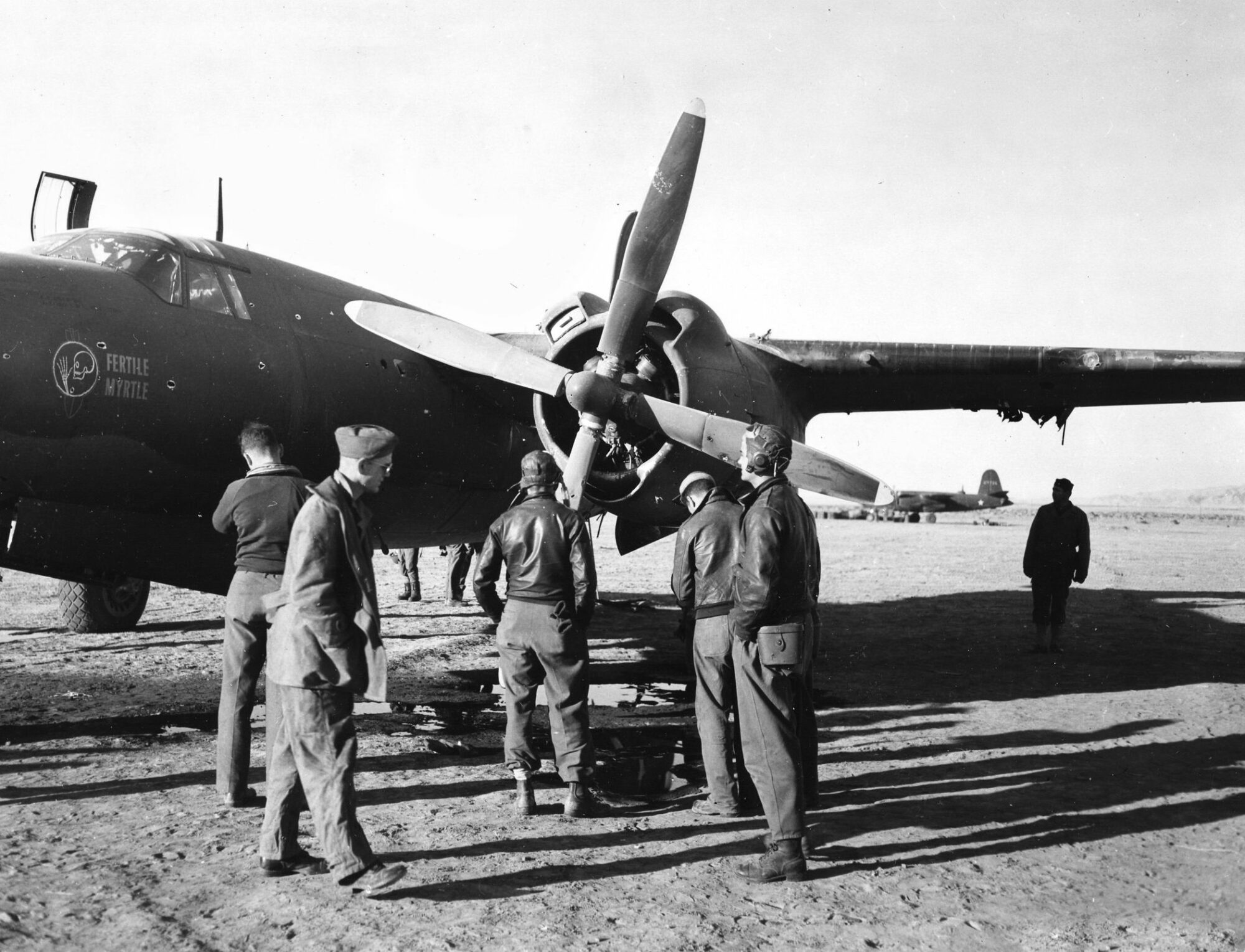
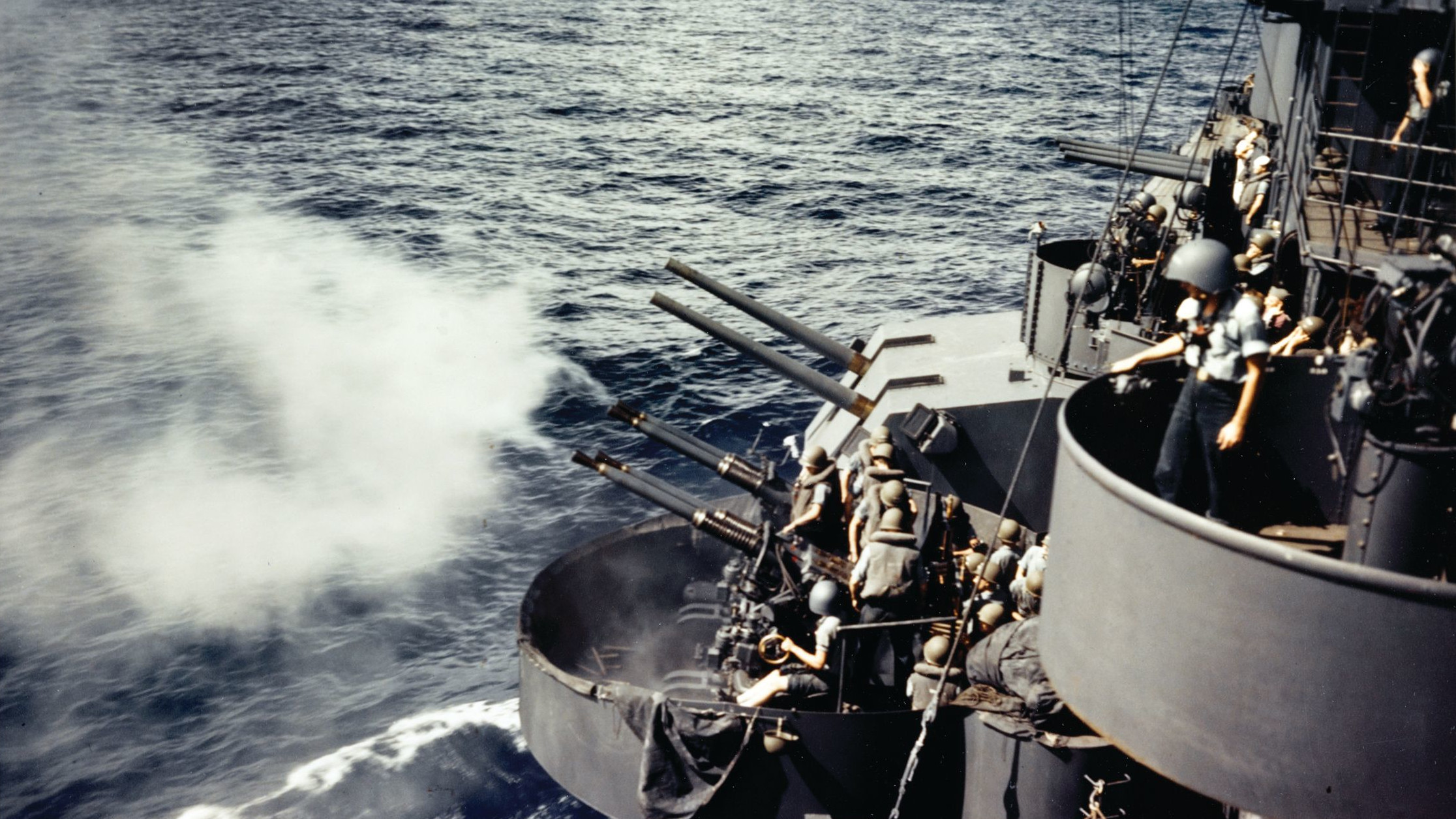
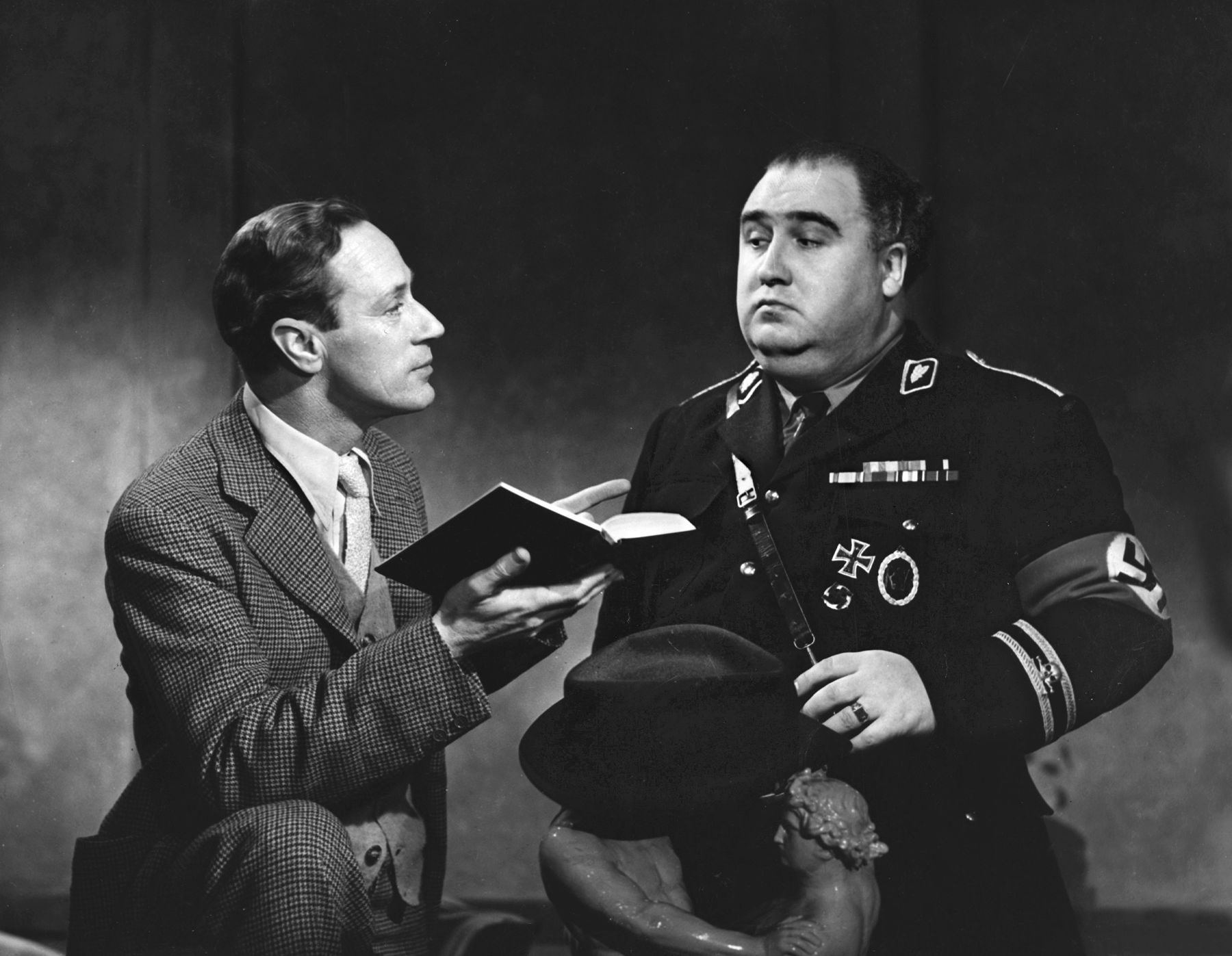
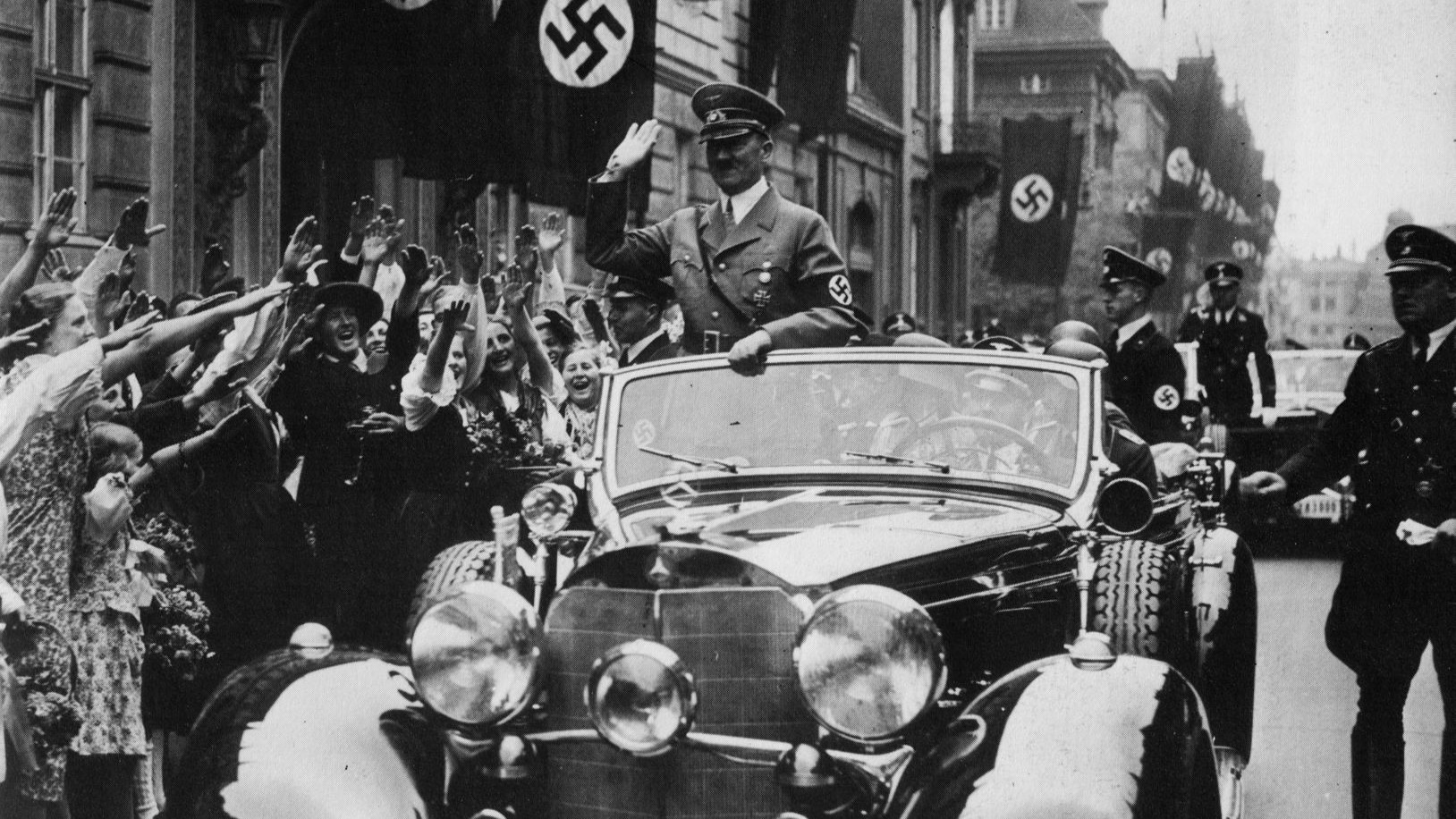
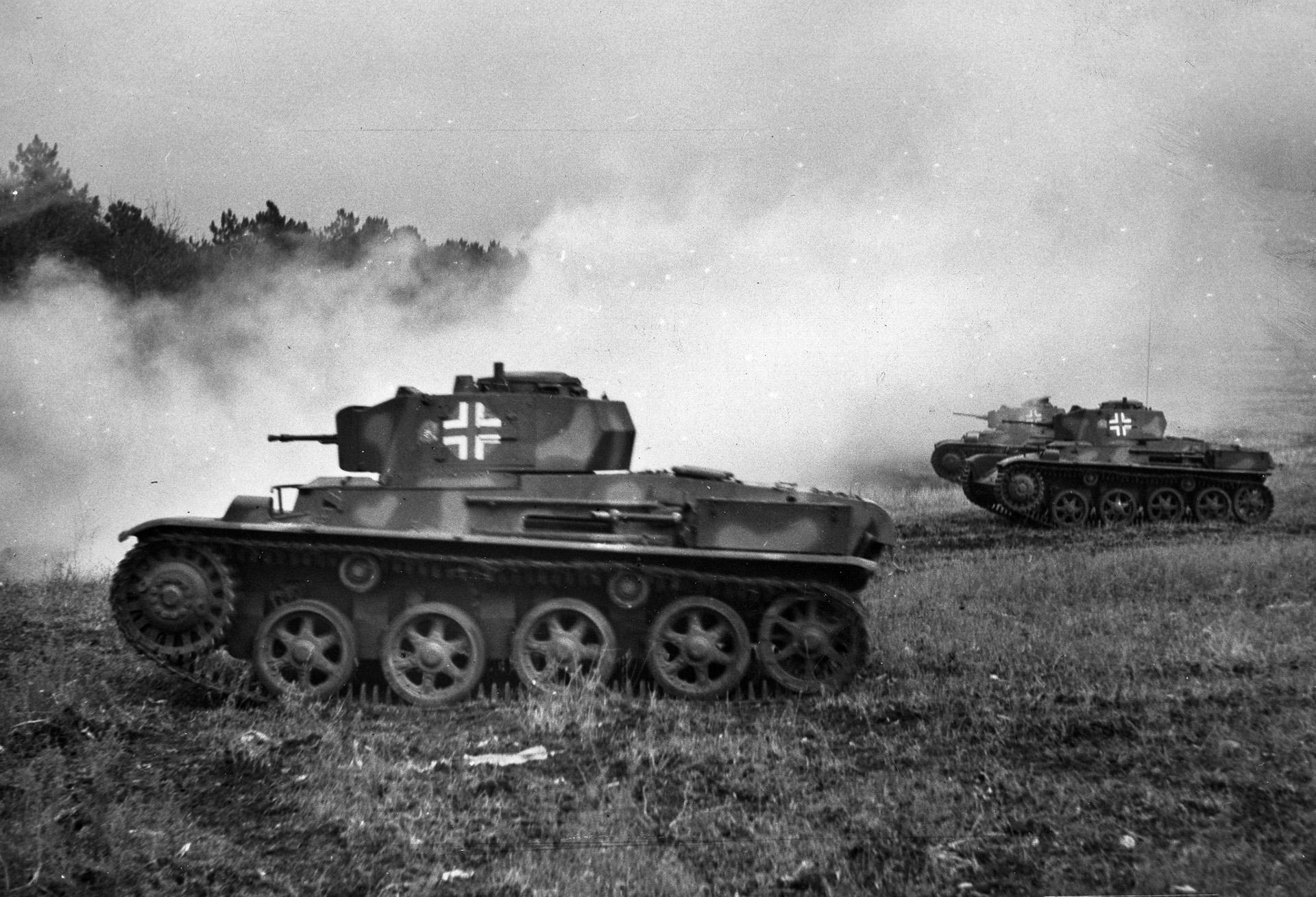
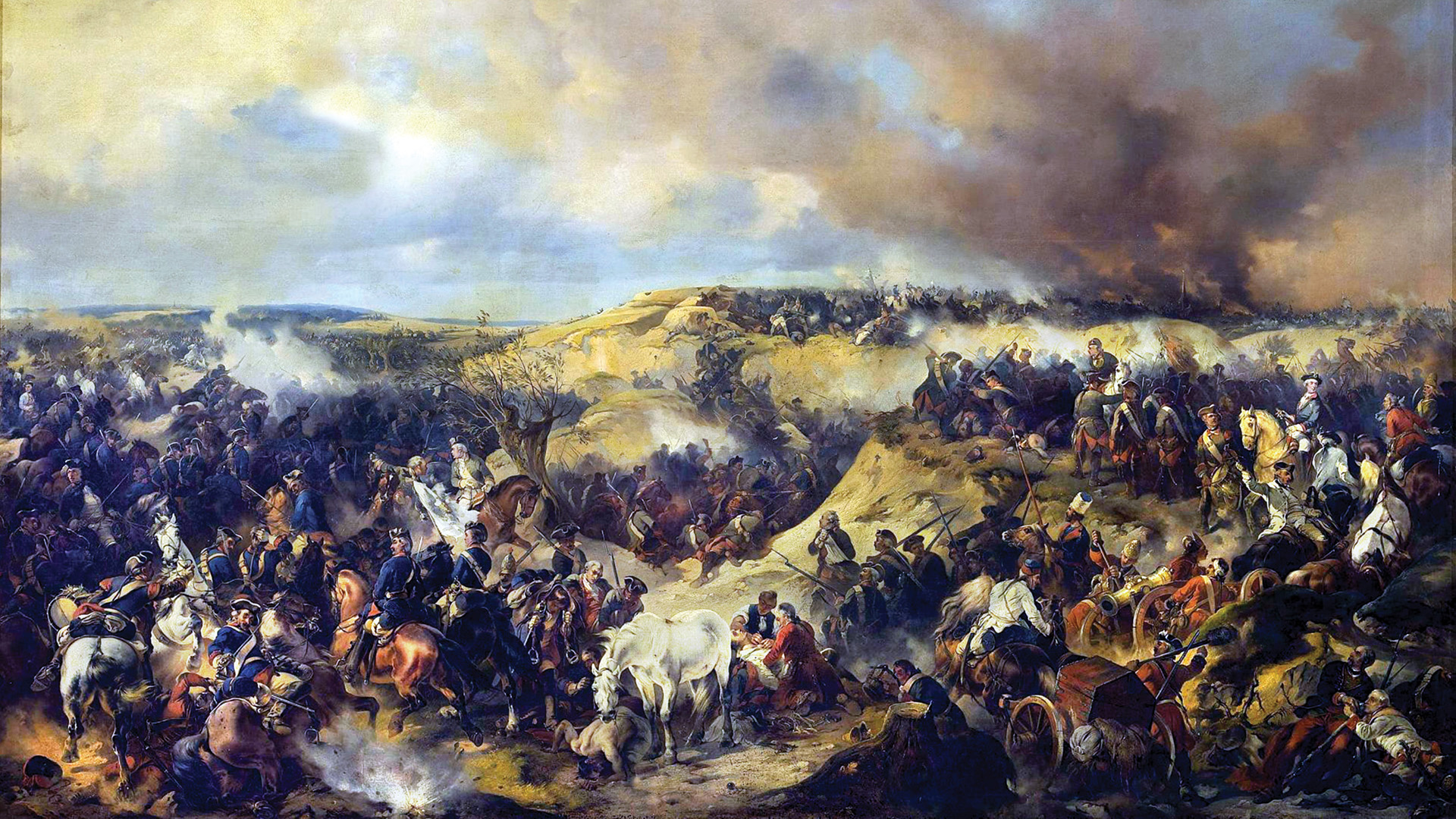

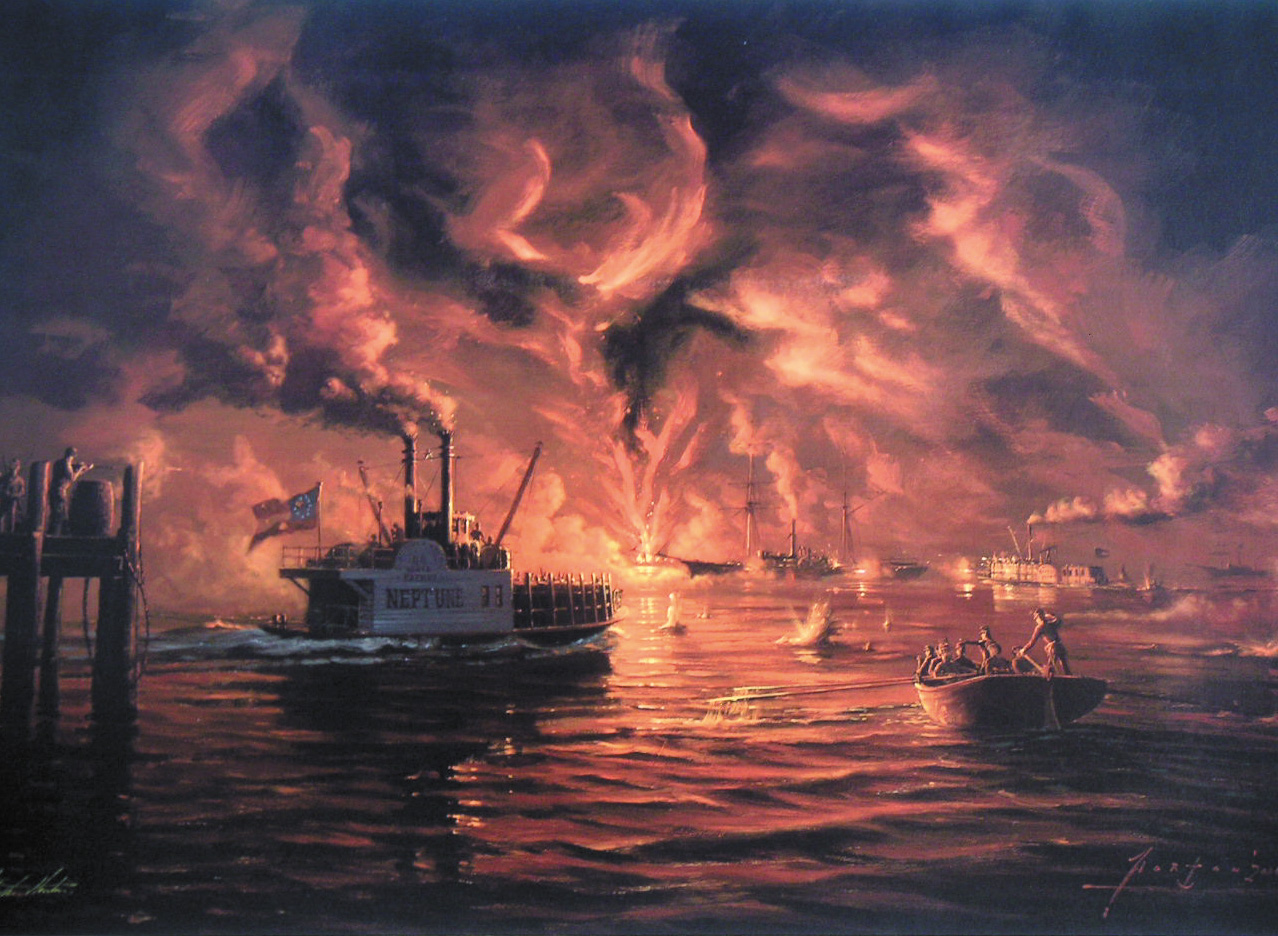
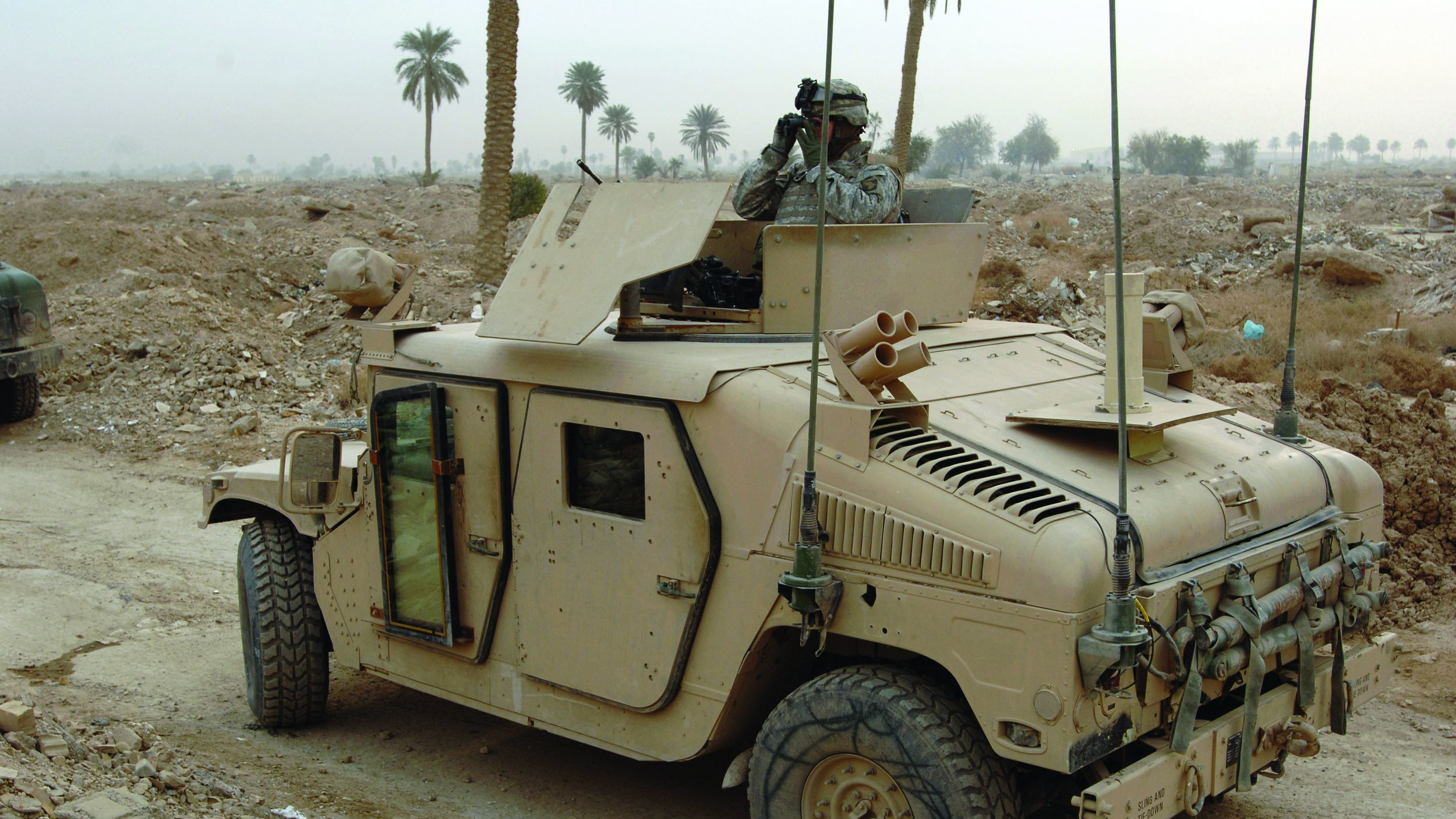
Although this article about the 319th Bombardment Group is okay, it’s connection to the Doolittle Raid is somewhat loose. The reality is that the Doolittle B-25s were intended to reinforce the recently activated Tenth Air Force, along with a B-24 unit called HALPRO that was on the way to India and China via the Middle East – a squadron of B-17s actually made it to India. It’s been some time since I’ve looked at the mission, but I believe some, if not most, of the Doolittle survivors remained in India and joined other B-25 crews that finally arrived soon after the ill-fated raid. It’s a fact that Doolittle thought the raid was a failure and expected to be court-martialed but President Franklin Roosevelt saw the propaganda value, although many in the military thought his actions were ill-founded and would prolong the war. It is a fact that the Japanese launched a major offensive in China in retaliation for the raid and not only captured the areas of China where US air bases could have been built, they killed something like 250,000 Chinese. My dad served under Doolittle in the Eighth Air Force in England and he had no use for the man. He and other bomber crewmembers believed Doolittle was using them to make headlines for himself.